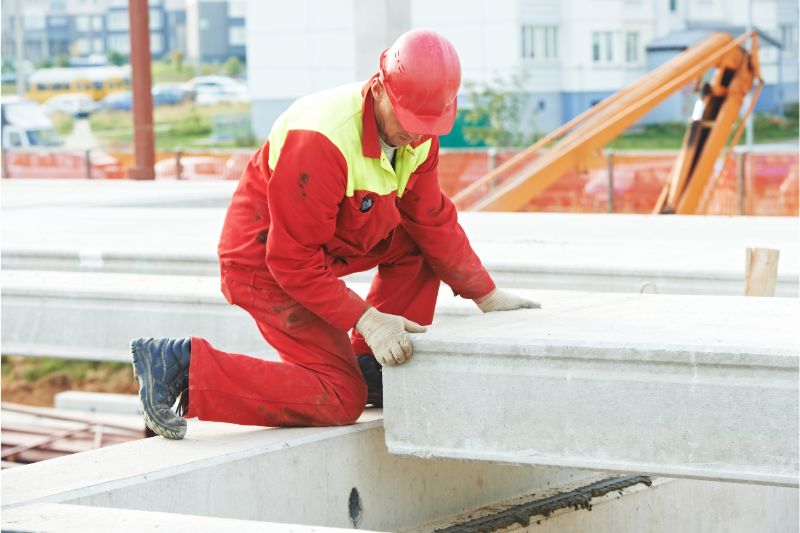A Comprehensive Guide: Installation and Maintenance of Concrete Slabs
August 13, 2024Installing or refurbishing a property comes with several decisions—perhaps none quite as foundational (quite literally) as choosing what comprises your house's structure. Concrete slabs predictably rise to the top of contenders when considering materials for your abode's foundational flooring. But why concrete instead of other materials? And once installed, how do you maintain it?
In this comprehensive guide, we delve into the world of concrete slabs—elucidating the process of installation, outlining best practices for maintenance, and uncovering the pros and cons. Regardless of whether you're a DIY enthusiast, a professional builder, or simply a homeowner wanting to make an informed decision—this guide's for you.
 |
| Concrete Slabs |
Why Choose Concrete Slabs?
The reasoning behind choosing concrete isn't arbitrary. Concrete, thanks to its solid composition and hard-wearing nature, provides durability hard to match. A well-laid concrete slab can outlast most other materials, making it an ideal option for various spaces, from offices to households to even warehouses.
Concrete is also remarkably adaptable, molding to the architect's will, allowing for versatility in design. Finally, maintenance is relatively hassle-free, making concrete slabs a cost-effective choice in the long run.
The Installation Process
The process of installing concrete slabs is slightly complex. It involves soil test, site preparation, adding sub-base and reinforcement, formwork setting, adding joints, pouring concrete, and finally, slab finishing and curing. Each process step is critical and requires precision and expertise.
With evolving technology, precast concrete slabs are also available nowadays. This not only simplifies the installation but also ensures better quality control.
Pros and Cons of Concrete Slabs
Like everything else in life, concrete slabs come with their share of pros and cons. The pros include durability, low maintenance, pest resistance, and fire resistance. The cons, on the other hand, include cold underfoot, limitations for under slab utilities, and the potential for cracks if not correctly installed or maintained.
Maintenance - Sealing Protecting & Cleaning
A concrete slab might be durable, but it doesn't mean it's indestructible. Protection and Cleaning are part of the routine processes to keep the slab in good shape. Sealing the concrete provides added protection by essentially locking out any potentially harmful substances.
Cleaning is relatively straightforward - a mix of soap and water usually does the trick. For stubborn or intrinsic stains, pressure washing or chemical cleaners might be needed. However, it is crucial to reseal after using a rigorous cleaning process.
.jpg) |
| Concrete Slabs |
Handling Cracks and Repairs
No slab can stay perfect forever. Time, pressure, and the elements all take their toll on the concrete slab—often resulting in cracks. But fear not! With early detection, the crack can usually be fixed without needing to replace the entire slab. Regular inspections are crucial; small cracks can often be managed with simple DIY solutions like crack fillers or epoxy injections.
However, if you notice larger cracks or signs of shifting, it’s wise to consult a professional. They can assess the underlying issues and recommend more extensive repairs, such as reinforcing the slab or addressing drainage problems that could be causing the cracks. By staying proactive with maintenance and addressing cracks promptly, you can extend the life of your concrete slab and maintain its structural integrity.
Prevention - The Key to Long Life
If maintained adequately, concrete slabs have an impressive lifespan. Prevention is often the key to longevity. Regular sealing can prevent water from seeping into the concrete, which is essential as moisture can weaken the slab and lead to more severe damage over time. Additionally, ensuring proper drainage around the slab will help keep water away and reduce the risk of erosion and cracking.
Using quality concrete mix and reinforcement materials during installation also plays a critical role in preventing future problems. Regularly inspecting the slab and addressing minor issues before they escalate can save you from costly repairs and extend the life of your concrete investment. Taking these preventive measures ensures that your concrete slab remains strong and durable for years to come.
Conclusion
In conclusion, concrete slabs offer an unmatched foundation of strength and resilience, making them an ideal choice for building your dream space. With proper installation and regular maintenance, these robust structures can endure the test of time, providing long-lasting durability and versatile design possibilities. To maximize the benefits of concrete slabs in your home improvement projects, it's essential to be informed about their advantages and potential drawbacks and to prioritize their upkeep. If you're ready to elevate your construction or renovation project with the enduring power of concrete slabs, consult with a professional today to explore your options and ensure a flawless execution.



0 comments